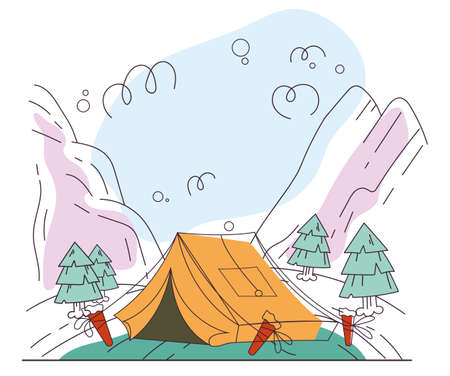Understanding Scotland’s Right to Roam
Scotland stands apart from much of the UK in its approach to outdoor access, anchored by a progressive and deeply rooted tradition known as the “Right to Roam.” This legal framework is enshrined in the Land Reform (Scotland) Act 2003, which grants everyone the statutory right to access most land and inland water for recreational and educational purposes. Unlike England or Wales, where public footpaths are the norm, Scotland’s laws allow for far greater freedom, so long as activities are conducted responsibly. The origins of this access culture stretch back centuries, reflecting a deep respect for wild places and the belief that the land should be shared for the benefit of all. Today, these rights not only support outdoor pursuits like hiking, hillwalking, and wild camping but also reinforce a collective responsibility to protect natural habitats and rural livelihoods. For visitors and locals alike, understanding the historical significance and legal boundaries of this unique right is essential before venturing into Scotland’s rugged landscapes.
Access vs. Trespass: Knowing Your Boundaries
Understanding the difference between lawful access and trespassing is essential when venturing into Scotland’s wild spaces. Unlike much of the rest of the UK, where private landownership can significantly restrict access, Scotland operates under the Land Reform (Scotland) Act 2003, granting a unique “right to roam.” This means that, provided you act responsibly, you have legal access to most land and inland water for recreation, education, and passage.
Key Differences: Scotland vs. The Rest of the UK
| Scotland | England & Wales | |
|---|---|---|
| Public Access Rights | Extensive rights to walk, cycle, horse-ride, and camp on most land and inland water. | Access generally limited to public footpaths, bridleways, and designated open access land. |
| Trespass Law | Civil matter; rarely prosecuted unless damage or disturbance is caused. | Considered a civil offence; more strictly enforced, especially off designated paths. |
| Wild Camping | Permitted almost everywhere with responsible conduct (some local restrictions apply). | Generally prohibited without landowner permission except in parts of Dartmoor. |
| Barriers & Signs | No right to block access except in specific circumstances (e.g., privacy, safety). | Landowners may erect barriers and signs to limit entry beyond public rights of way. |
The Spirit of Responsible Access
Your freedom in Scotland comes with clear responsibilities. You must respect people’s privacy, avoid damaging property or crops, and follow guidance under the Scottish Outdoor Access Code. For example, while you can pass through farmland, you should avoid fields with crops or livestock whenever possible, close gates behind you, and never disturb wildlife or nesting birds.
Avoiding Accidental Trespass
Always look out for signs indicating restricted areas—such as school grounds, railway lines, or military installations—which remain off-limits. If you’re unsure whether a particular route or campsite is permitted, consult local signage or ask nearby residents. Remember: your right to roam is robust but not absolute. Respecting boundaries ensures that these hard-won freedoms endure for all who seek adventure across Scotland’s rugged landscapes.

3. Principles of Responsible Outdoor Conduct
The Scottish Outdoor Access Code sits at the core of navigating Scotland’s wild spaces with both freedom and respect. Enshrined in law, it underpins the “right to roam” by clearly outlining the expectations for all who explore the countryside. The code is built on three fundamental pillars: respecting the interests of others, caring for the environment, and taking responsibility for your own actions.
Respecting Landowners and Rural Communities
Access rights come hand-in-hand with obligations towards those who live and work in Scotland’s rural landscapes. When crossing farmland, keep gates closed behind you unless marked otherwise, avoid disturbing livestock—especially during lambing or calving—and always follow designated paths where possible. If you need to cross private land, do so quickly and quietly, steering clear of homes, gardens, and operational farmyards. Engage courteously if you encounter land managers, and remember that rural communities rely on these lands for their livelihoods.
Protecting Wildlife and Natural Habitats
Scotland’s wilderness is a fragile tapestry of habitats supporting diverse flora and fauna. Minimise your impact by sticking to established tracks in sensitive areas such as peat bogs or wildflower meadows. Observe wildlife from a respectful distance; never feed or approach animals, especially nesting birds or young mammals. During breeding seasons, be extra vigilant—dogs should be kept under close control or on leads to prevent disturbance. Leave natural features untouched: resist the urge to pick plants, disturb rocks, or collect souvenirs.
Caring for the Environment
Leave no trace is more than a slogan—it’s a duty. Carry out all rubbish, including food scraps and biodegradable waste; what you pack in must leave with you. Avoid lighting fires except where permitted and safe—use stoves wherever possible to prevent scarring the landscape or risking wildfires. Choose hard ground for pitching tents rather than delicate vegetation, and move your camp regularly if staying more than one night. When nature calls, bury human waste at least 30 metres from water sources, using a trowel to minimise environmental harm.
The Spirit of Mutual Respect
Ultimately, responsible outdoor conduct is about stewardship—preserving Scotland’s wild places for future generations while maintaining harmony with those who call these landscapes home. By following the Scottish Outdoor Access Code diligently, you not only safeguard your right to roam but also ensure that these spectacular environments remain unspoilt for all adventurers who follow in your footsteps.
4. Wild Camping: The Law and the Lore
Wild camping in Scotland is not just a pastime—it’s a privilege enshrined in law and embedded in the nation’s outdoor culture. Thanks to the Land Reform (Scotland) Act 2003, responsible wild camping is permitted on most unenclosed land. However, with this freedom comes an expectation of respect for the landscape, wildlife, and local communities. Understanding both legal rights and unwritten rules is essential for anyone looking to pitch their tent beyond official campsites.
Legal Rights Under Scottish Law
The right to roam allows individuals to camp on unenclosed land, typically away from roads, buildings, and cultivated fields. This access is granted under the following conditions:
| Legal Requirement | Description |
|---|---|
| Location | Camp only on unenclosed land—avoid private gardens, farmland with crops or livestock, and near dwellings. |
| Duration | Stay no more than 2-3 nights in any single spot to minimise impact. |
| Group Size | Small groups are preferable; large parties require landowner permission. |
| Fire Regulations | No open fires unless using a stove or if conditions are safe; always check local fire bans. |
Cultural Expectations and Etiquette
Beyond the letter of the law lies the Scottish outdoor code—a blend of tradition and mutual respect. Here are practical do’s and don’ts that shape responsible wild camping behaviour:
| Do’s | Don’ts |
|---|---|
| Pitch late, leave early to minimise your presence. | Avoid camping close to houses, roads, or popular trails. |
| Use a lightweight tent or bivvy for minimal impact. | Don’t light fires directly on the ground or damage vegetation. |
| Carry out all rubbish—including food scraps and toilet paper. | Avoid polluting water sources; never wash directly in streams or lochs. |
| Bury human waste at least 30 metres from water, using a trowel. | Don’t linger in one spot if it shows signs of overuse or erosion. |
The Spirit of Leave No Trace
The essence of Scottish wild camping is summed up by “leave no trace.” Not only does this mean packing out everything you bring in, but also blending into the environment so future campers find it untouched. Respecting access means moving quietly through landscapes, keeping noise down, and always considering how your actions might affect others—be they locals, fellow walkers, or wildlife.
5. Practical Skills for Safe and Legal Wild Camping
Site Selection: The Foundation of a Good Night’s Rest
Choosing your camping spot in the Scottish outdoors is about more than a scenic view. Seek ground that is dry, flat, and out of sight of roads or buildings. Avoid farmland with crops or livestock, and steer clear of areas near water sources to prevent contamination and erosion. Remember, the wild campers code is discretion—leave no trace you were ever there.
Leave No Trace: Treading Lightly on Scotland’s Land
The principle of Leave No Trace is sacrosanct in the Highlands and beyond. Pack out everything you bring in, including rubbish and food waste. Use a trowel to bury human waste at least 30 metres from water, trails, and buildings. If thats not possible, bag it up and take it home. Respect wildlife by keeping noise down and observing from a distance.
Fire Safety: When and How to Burn Responsibly
Open fires are traditional but fraught with risk in Scotland’s often dry moorlands. Use a portable stove whenever possible. If you must light a fire, keep it small, controlled, and off the ground using a fire pan. Never light fires during dry spells or in forested areas. Extinguish thoroughly with water—not just earth—and scatter cold ashes discreetly.
Dealing With the Elements: Weatherproofing Your Camp
The Scottish climate is famously fickle; be ready for rain, wind, and midges even in summer. Choose kit that is waterproof and robust—no cheap tents here if you want a good night’s kip. Pitch with your back to prevailing winds and secure your shelter well. Keep warm layers close at hand and always have an escape plan should conditions turn foul.
Master the Basics—Respect the Land
By honing these core skills—site selection, minimal impact, fire safety, and weather awareness—you’ll not only stay safe but also uphold Scotland’s proud tradition of responsible outdoor access. Every wild camper is both guest and guardian; act with respect so that these freedoms endure for generations to come.
6. Staying Connected: Local Customs and Emergency Planning
Venturing into Scotland’s wild landscapes is as much about respecting its people and traditions as it is about embracing the raw beauty of the outdoors. When you’re out exploring, interactions with locals can be pivotal. Always greet landowners or crofters politely if you cross paths on their property, and never assume access without a friendly word or nod. Scots are generally welcoming, but they value respect for privacy and livestock—so always close gates behind you and avoid disturbing animals.
Embracing local customs goes beyond basic politeness. Take time to learn about regional events or festivals, and if invited, join in with humility. Remember that some areas may have restrictions due to lambing season or game management; check local signs and heed advice from residents or rangers. Don’t forget the Scottish principle of ‘leave no trace’—clean up after yourself, keep noise to a minimum, and use established tracks where possible.
Scotland’s weather is notoriously unpredictable, shifting from sunshine to sleet in minutes. Equip yourself with waterproofs, layered clothing, and sturdy boots. Before setting off, always inform someone of your route and expected return—mobile reception is patchy in remote glens and highlands. Carry an OS map and compass even if you rely on GPS; batteries die quickly in cold weather.
If disaster strikes—a twisted ankle on a Munro or sudden fog rolling in—remain calm. The mountain rescue services are world-class but rely on clear information: know how to describe your location using grid references or What3Words if possible. For emergencies, dial 999 and ask for Police Mountain Rescue.
Above all, blend resilience with courtesy. A well-prepared camper not only survives but thrives in Scotland’s wild places, forging respectful connections with both the land and its people.

